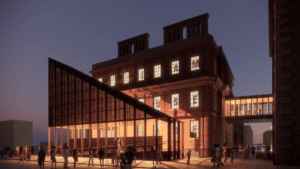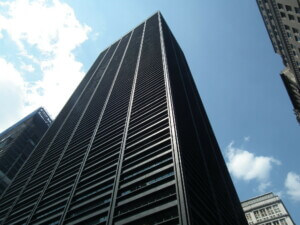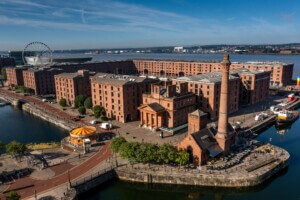A multidisciplinary team led by eponymous architectural studio of Asif Khan in collaboration with Sir David Adjaye, Nigerien architect Mariam Kamara, and Chicago-based social practice artist and educator Theaster Gates is the winner in a closely watched placemaking competition to dramatically rethink Liverpool’s Canning Dock.
The so-called Canning Dock Project, which will transform “a public space that has an incredibly unique history, embedded with a rich and powerful heritage linked to the very roots of Liverpool’s port,” is a major element of National Museums Liverpool (NML)’s master plan to revamp a sizable swath of historic waterfront in the (recently UNESCO World Heritage Site de-listed) English maritime city. The project focuses on an area between Royal Albert Dock and Mann Island that was used in the 18th century to repair and clean ships transporting slaves.
The team of Khan, Adjaye, Kamara, and Gates—joined by Plan A Consultants, Prior + Partners, The Place Bureau, Hara Design Institute, AKT II, Arup, and Donald Insall Associates—was unanimously selected by a seven-person panel chaired by Paul Monaghan, beating out five other shortlisted teams by the likes of Arup, BIG, DSDHA, OMMX, and shedkm. (On the BIG-led team was Adjaye’s brother, the conceptual sound artist Peter Adjaye.) As noted by the NML in a press statement, the panel was “hugely inspired by the high quality of all the entries and the passion and expertise of the winning team, which exemplified the best of amalgamating history, design, and innovation.”
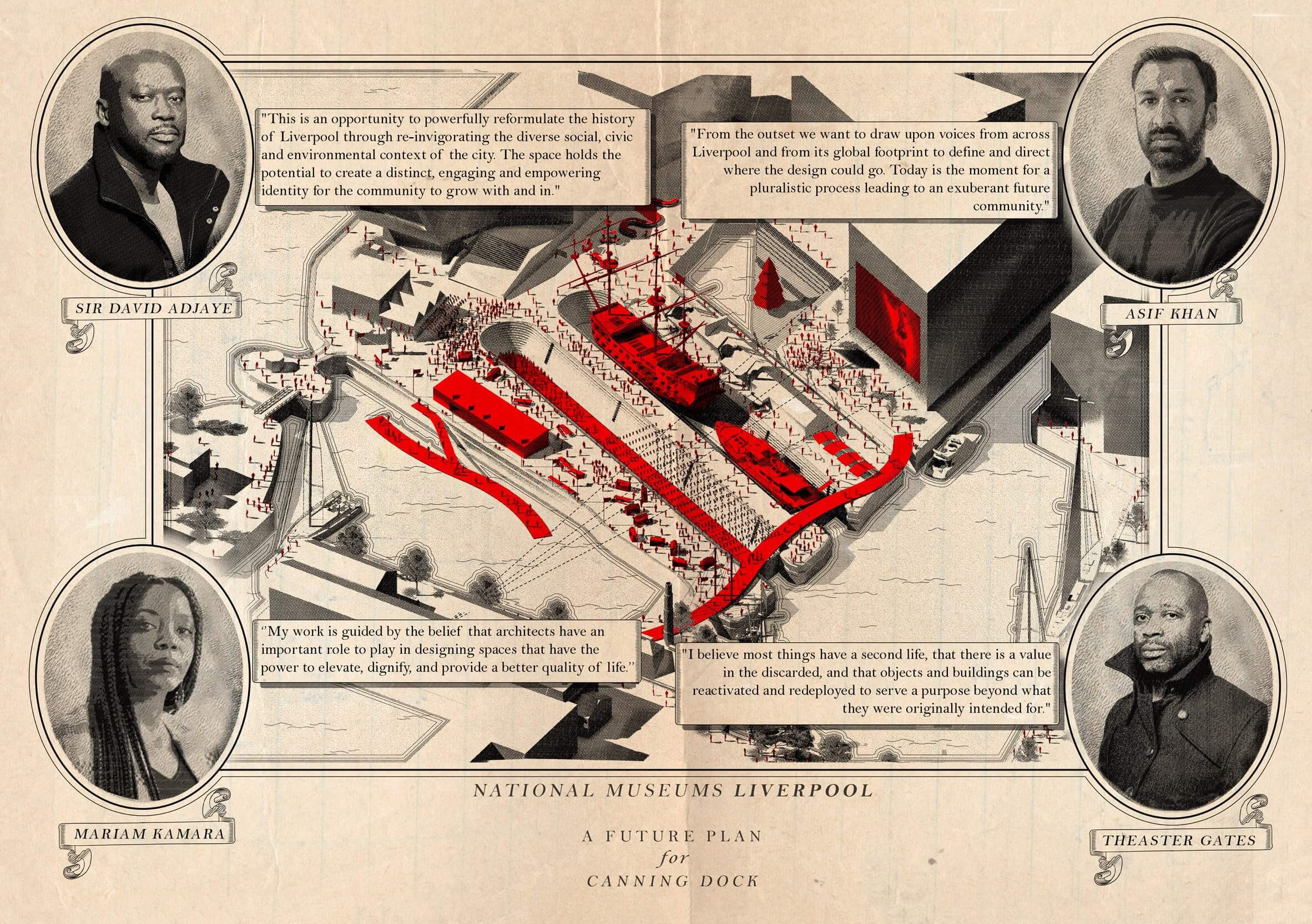
The larger project will commence with the redevelopment of the Dr. Martin Luther King Jr. Building. The mid-19th century Grade I-listed building, formerly known as the Albert Dock Traffic Office, is located directly adjacent to NML’s International Slavery Museum. Following its acquisition by the NML, the building was converted into an auxiliary exhibition space for the museum. The fully redeveloped building “will be at the very heart of the reinvigorated International Slavery Museum” complete with a “dramatic new front door” that will lead museum visitors “to spaces to explore and investigate the transatlantic slave trade and legacies,” according to the organization.
In a separate yet complementary effort, the Canning Dock Project team will reimagine the waterfront area around the expanded International Slavery Museum, which is co-located with sister institution the Merseyside Maritime Museum, through art- and design-based storytelling and public realm enhancements. Work will include the creation of new bridges spanning from the Pump House to Mann Island, the transformation of the two dry docks into an “educational and cultural experience,” and more.
“A primary focus of the transformation is to respond to the waterfront’s unique history – looking at ways to bring the history of the transatlantic slave trade more into the public realm through compelling yet sensitive designs — and ensuring Liverpool’s Black communities are engaged and represented throughout,” explained the NML.
To that point, the Canning Dock Project will unfold as a largely collaborative one led by the winning design team alongside the NML, stakeholders, community groups, and others to ensure that “the vision for the new waterfront is explored and delivered with a collaborative, open and accountable approach.” Robust consultations and community engagement sessions will be held, enabling the design team to “determine the best way to successfully animate the visitor experience on the waterfront.”
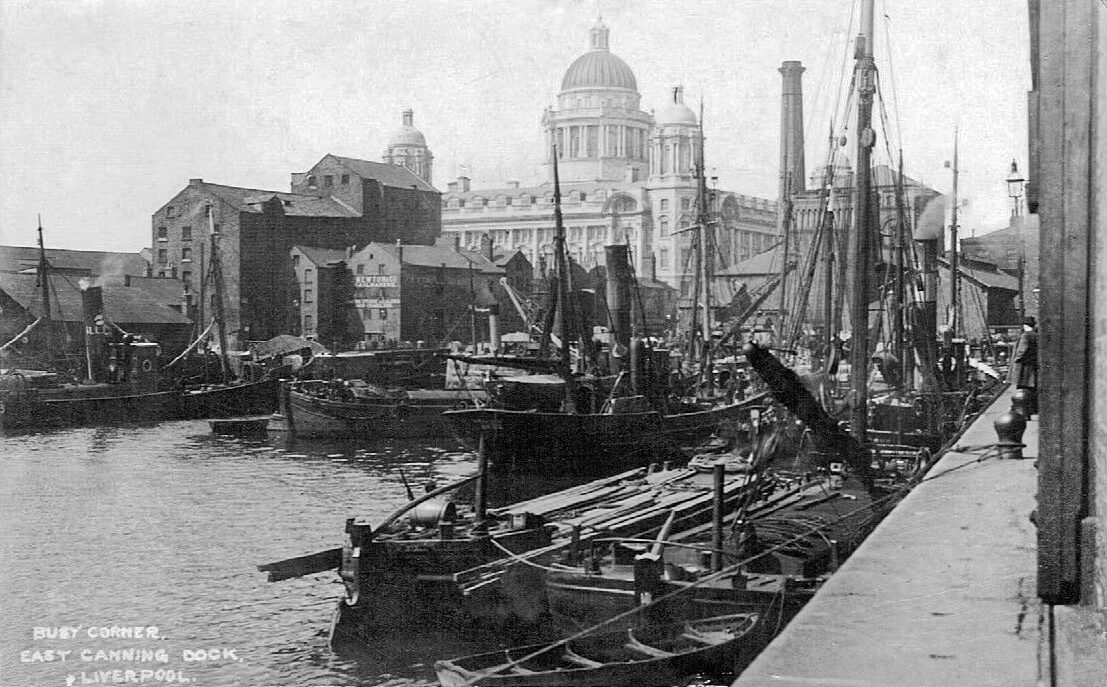
“Our International Slavery Museum is the only museum of its kind in the country and a vitally important institution, not just locally but nationally and internationally too, in educating people on the sins of the past,” added Councillor Mike Wharton, who serves as the Liverpool City Region Portfolio Holder for Culture, Tourism and the Visitor Economy. “This exciting project will both redevelop the Dr Martin Luther King Jr Building and transform the entire waterfront, attracting even more people to visit and learn about the transatlantic slave trade and its legacy.”
The NML is currently seeking funding for the Canning Dock Project including a pending bid submitted by the Liverpool City Council to the central government’s Levelling Up Fund. Managed by Colander Associates, the competition was made possible by funding from the Liverpool City Region Combined Authority as part of its Race Equality Program.
“Commemoration and memorial making are some of the most important acts a nation can be involved in — especially commemoration around racial complexity and social ill,” said Gates, who has had quite a tremendous year thus far. Just this month, he was bestowed with the prestigious Frederick Kiesler Prize for Architecture and the Arts while his Chicago-based nonprofit Rebuild Foundation was awarded a $3.5 million grant by the Andrew W. Mellon Foundation’s new Humanities in Place program. In May, it was announced that Gates will design the 2022 Serpentine Pavilion as the first non-architect to win the commission in the initiative’s 21-year history.
“Canning Dock represents one of the most important racialised sites in the U.K. and it gives me tremendous honour to work with this team to realise the complexity of the site,” Gates added. “We hope that by using the tools of monument making and memorialising and commemoration, we will be able to do what many have not been able to do, which is to give emotional heft to the truth of slavery in the U.K. historically and the possibility for a site of re-emotionalising, healing, and processing those complexities. This will not be an easy journey, but we take the task with great humility and seriousness.”








